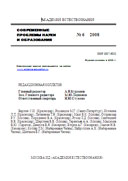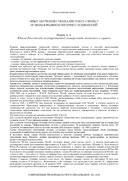PDF-версия статьи


|
However the results of the investigations made by the authors of this paper show that the multiphase systems "voltage (or current) inverter – AC motor" have more considerable advantages over the 3-phase ones, which are caused by their greater control potentialities in comparison with the 3-phase drives (i.e. if the phase number M is more than four, some non-traditional control modes can be used in the drive system). This is shown, for example, in the following paper: A.V. Brazhnikov, and I.R. Belozyorov, “Over-Phase Control of Inverter Multiphase AC Linear Drives”, Book of Abstracts of 8th International Symposium on Linear Drives for Industry Application “LDIA‘2011”, Eindhoven, the Netherlands, July 3-6, 2011, paper No 172, pp. 122-123.
The over-phase control method is one of these non-traditional ones. It has two varieties: the over-synchronous control method and phase-pole one. It is when the phase-pole method (PPM) is used that the multiphase drive system has the most important advantages over the 3-phase ones. To achieve the PPM application opportunity, it is necessary to make the magnetic circuit and/or stator winding set of the multiphase AC motor with some peculiarities.
The control according to PPM consists of the increase in the electrical angles between the voltages (or currents) of the nearest phases of frequency converter by a factor of some whole number H without any change in the converter voltage (or current) amplitude and frequency. The integer H is the parameter of PPM. During PPM application process, when the parameter H changes, the effect adequate to the synchronous change in the drive phase number and number of motor poles appears. That causes the corresponding change in the mechanical characteristics when the parameter H changes. The additional use of the classical frequency control method allows to make the transition from one mechanical characteristic to another not stepwise, but smooth.
The joint application of PPM and the classical frequency control method allows to increase considerably the maximal torque of a multiphase AC motor without any rise in the motor magnetic circuit magnetization magnitude and to increase the speed of response of the drive system as well. For example, the acceleration period of the motor decreases (even without the increase in the supply voltage over the rated value) if the acceleration process begins with the maximal value of the parameter H first, and afterwards this value diminishes during above mentioned process. The degree of the acceleration time decrease depends finally on the drive system phase number. If M tends to infinity, this time diminishes by a factor of 1.55.
Moreover the use of PPM gives additional advantages for the multiphase drives in the cases when the mechanical characteristic of a motor load mechanism is descending. These advantages are conditioned by the following: in the mentioned cases the combined application of PPM and the classical principle of frequency control in the drive system allows to use the AC motors having less power rating than in the case when the frequency control is only used. The degree of this dimension depends on the phase number of the drive system.
Since in the case being considered, the motor power rating can be decreased, so the mass-and-overall dimensions, manufacturing cost of the machine, and the inertial moment of a motor rotor diminishes as well.
PPM application allows to increase the time to repair (i.e. the time of non-stop operation) of the drive system if it is possible to increase the motor supply voltage when the drive system begins to work in some abnormal (i.e. emergency) operating conditions (for example, when one or more phase windings of a motor stator have been broken). In these cases the increase of the parameter H to a specific value allows to obtain the necessary motor torque value, and the corresponding increase of the amplitude and frequency of the supply voltage allows to obtain the required rotation speed.
ОПУБЛИКОВАНО
Brazhnikov A.V., Belozerov I.R. MAIN ADVANTAGES OF MULTIPHASE INVERTER AC DRIVES. // Современные проблемы науки и образования - 2011.-№6. (приложение "Технические науки"). - C. 16